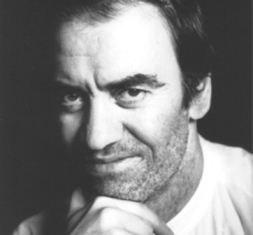
Gergiev Roars in Cincinnati
There is something about Russian maestro Valery Gergiev that brings heraldic symbols to mind – a lion rampant, or perhaps the snow leopard pictured on the coat of arms of his native Ossetia (a republic of the Russian Federation situated in the Caucasus).

With his outstretched arms, fluttering fingers and precise motions of the hand and wrist, he could be a lion rearing on its hind legs, paws extended.
Gergiev needs no baton and he dispensed with one guest conducting the Cincinnati Symphony Orchestra Thursday evening at Music Hall. His body, including lots of eye contact, was more than enough to convey his wishes to the players, who registered a top notch performance of Stravinsky’s “Petrouchka” and Tchaikovsky’s Symphony No. 5.
The one-time-only concert filled all but the “bad” seats at Music Hall, i.e. the ones with limited or obstructed views, which when and if the 3,500-seat hall is “downsized,” should be removed anyway.
The busy conductor, artistic and music director of St. Petersburg’s Mariinsky Theater (also the London and Rotterdam Symphonies and much else), came to Cincinnati between performances of Tchaikovsky’s “Eugene Onegin” at the Metropolitan Opera in New York he guest conducts New York City Ballet tonight and Sunday (!).
It was a rare visit to an American orchestra, facilitated by his friendship with CSO music director Paavo Järvi. The chemistry Gergiev achieved in just two rehearsals was not unlike what Järvi enjoys with the CSO, and many of the players flocked backstage afterwards to express their appreciation.
Gergiev (53) strode to a podium smaller than the one usually used for CSO Music Hall concerts (he sometimes conducts without one) and plunged immediately into the bustling Shrovetide Fair music of “Petrouchka.” It was the CSO premiere of the original 1911 version, which utilizes a larger orchestra than the more familiar 1947 one.
The Mardi Gras-like hubbub featured razor sharp “dissonances,” delightful woodwind solos (flutist Randy Bowman’s Magician) and a palpably percussive Russian Dance (kudos to pianist Michael Chertock).
Gergiev and the CSO crafted the ballet’s come-to-life puppets in paint-box colors – the love-struck Petrouchka railing bi-tonally in the clarinets, the greasy Moor slithering up in low strings and bassoons to ogle the Ballerina, who whirled to a merry cornet solo.
He set the air vibrating in the final tableau, where a ferocious fortissimo chord introduced the lumbering bear, brought to life on the tuba by Mike Thornton. Petrouchka’s dispatch by the Moor received a bit of cursory lamentation before his ghost delivered his final taunts (trumpeters Doug Lindsay and Chris Kiradjieff).
Tchaikovsky’s Fifth, an audience favorite, had a kind of raw, idiomatic expression that somehow said “Russian,” while manifesting keen attention to detail. You could follow important lines and motives exactly where they went, not just as they surfaced now and then, and it was pure pleasure to watch Gergiev articulate a string pizzicato with a precise flick of the wrist and fingers.
Principal hornist Elizabeth Freimuth soared on her big solo in the slow movement, where Gergiev let the music shiver at the top of the second theme’s climactic return. The Valse (Waltz) contrasted grace with kinetic energy and bushels of charming detail. The finale had a joyful, brassy turbulence that was met at the end by a hall full of cheers.
(first published in The Cincinnati Post Feb. 23, 2007)